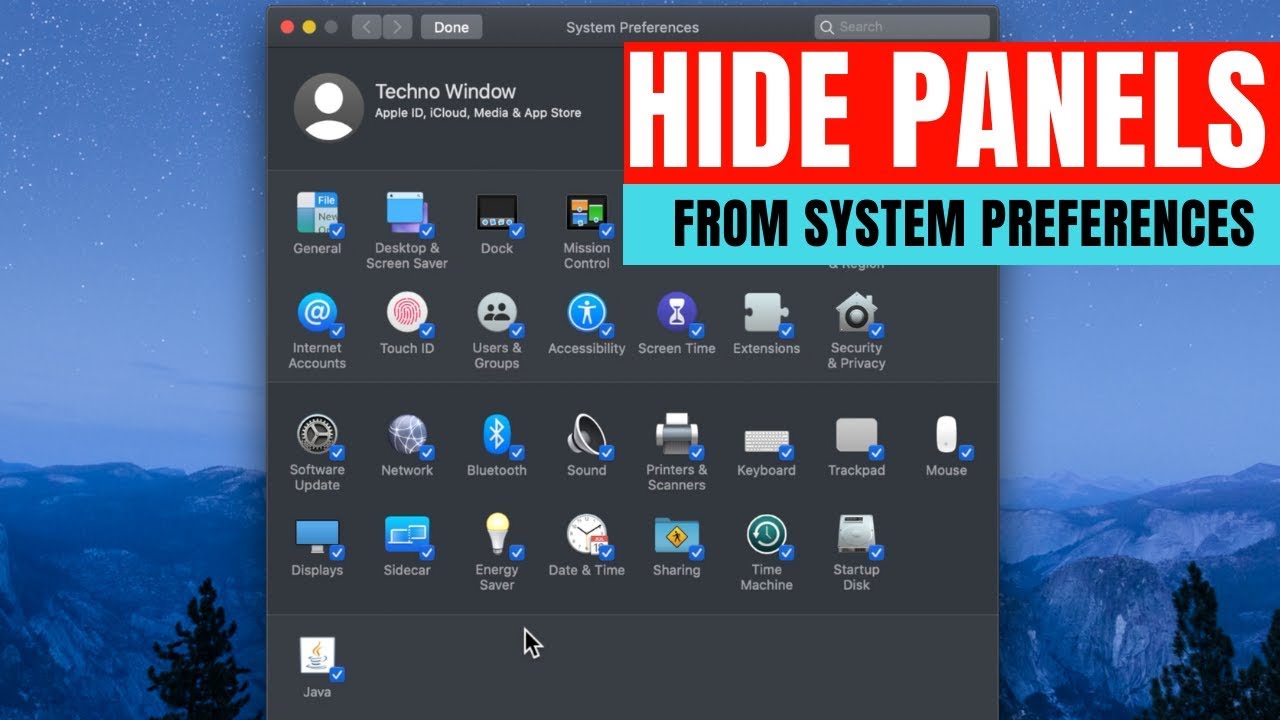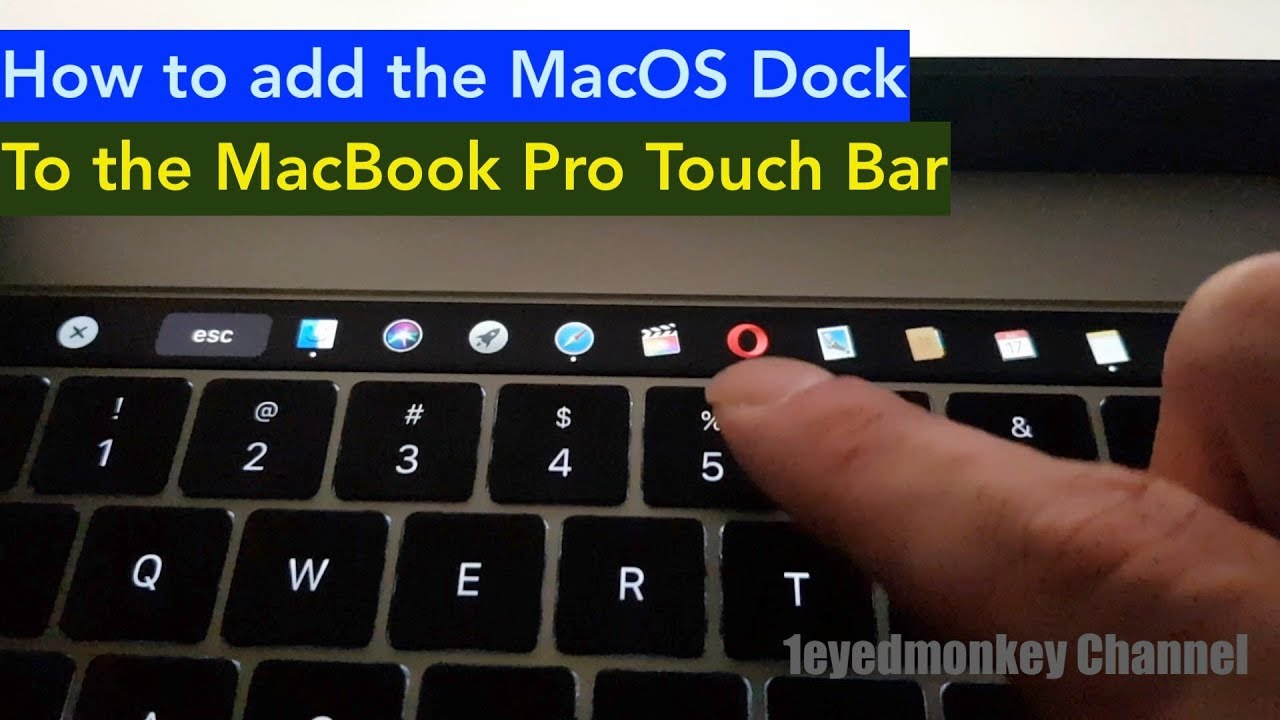The System Preferences application in macOS, is where you can control most but all the configurations of this operating system. It is a simple GUI to change the operation of macOS and includes panels to manage sound, keyboard, printers, mouse and trackpad, desktop background, internet connectivity, as well as panels for some third-party applications.
All panels are labeled correctly, so there is never confusion about what a panel is for in the Apple USA operating system. That said, you may not need them all in the System Preferences application. They may only contribute to the disorder, in which case you can use the panels you don’t use. And that’s how you can do it.

Hide panels from system preferences in macOS
- First, open the System Preferences application.
- At the top, you will see a speed dial button that is the “Show all” button.
- This button basically acts as a Start button.
- And it is visible regardless of the panel in which you are in the macOS Mojave operating system.
- When you click on it, you return to the main or start screen of the System Preferences application.
- To hide a System Preferences panel, what you need to do is click and hold this button.
- You will see a fairly long menu that lists each of the panels in the System Preferences application.
- At the bottom of this menu there is an option called Customize. Click here.
- In personalization mode, all panels, except Apple ID and Family Sharing, will appear with a check box in the lower right.
- Uncheck the box next to each panel you want to hide and then click Done.
- The panels will be hidden from the System Preferences application.
To recover the panel, you must click and hold the Show all button. And again, select the Customize option in the menu. Enable the panels you want to display and click Done, so you can see the results on the laptops.
Hiding a panel of System Preferences does not disable any functionality
Hiding a panel of System Preferences does not disable any functionality. For example, if you hide the Printers and Scanner panel, you could still print and scan documents from any printer and scanner that is connected to your system. This is just one way to sort System Preferences by removing items that you don’t use frequently on Apple computers.
Also, if you have someone who doesn’t feel very comfortable with Apple mac technology; For example, a child or an older person, you may want to hide a panel to prevent something from changing.
While you can hide panels from the System Preferences application, you cannot change their order. macOS has its own logic to group the panels and place them where they are and users cannot change the arrangement to adapt themselves. And not even gamer computer users can do it.
How to Customize System Preferences
To make these changes you have to follow some very simple steps that will allow you to check or uncheck the box of each icon.
- Open System Preferences from the Finder menu or by searching for it in Spotlight
- In the System Preferences menu bar, open Display and then Customize.
- Select or clear the check boxes for each icon as you want them to appear or not
- Tap OK when you’re done
- Only third-party preferences can be completely removed
- With this what you will get is to hide the icons, if on the contrary what you wanted was to delete any of them definitely, press the right button and then on Delete.
With this simple process we can quickly customize the System Preferences to suit what we use more often and remove unnecessary elements. This is especially useful if you want to quickly find the settings you’re looking for as there aren’t as many items to search for.
How to hide the Siri menu bar icon on MacOS
Don’t want to see the Siri menu bar button in the menu bar? Here’s how you can hide it on your Mac:
Go to the Apple menu and select “System Preferences”, then go to “Siri”
At the bottom of the preferences pane, change the “Show Siri in the Menu Bar” switch to hide the function
You can still summon Siri on your Mac using the keyboard shortcut or Dock icon, but the menu bar icon will no longer appear.
Of course, you can also turn off Siri on Maccompletely if desired, which will also remove the menu bar icon, but since it’s one of the defining features of modern macOS, it’s probably less desirable for most users of Mac.
Whether this is helpful or not, it depends on how full the menu bar on your Mac is, but removing the icons is one of the best ways to clean it up and reduce clutter in the menu.
How to hide the dock and menu bar in MacOS
The easiest way to do this is as follows:
- let’s go to System Preferences (Apple Apple Apple)
- Dock
- Hide and show Dock automatically.
And the Dock disappears until you hover the mouse pointer over the bottom of the screen.
How to make your Dock appear in the Touch Bar of your MacBook Pro
The last Touch Bar app I’ve come across is called Pock, and it will clone your Dock to your Touch Bar. When you activate it looks such that like this:

Your second Dock will work the same as your normal Dock, more or less. You can tap the icons to launch apps and you’ll see an indicator about which apps are open, as well as a box around the app you’re currently using. Small red notification symbols will even appear, although not without any numbers being displayed inside (this is a bit annoying but forgivable).
Within Pock’s preferences, you can set how long it takes to update notifications for your second Dock, as well as activate whether you want it to turn on when you turn on your computer or if you prefer Pock to completely hide the Control Strip option from your Touch Bar.